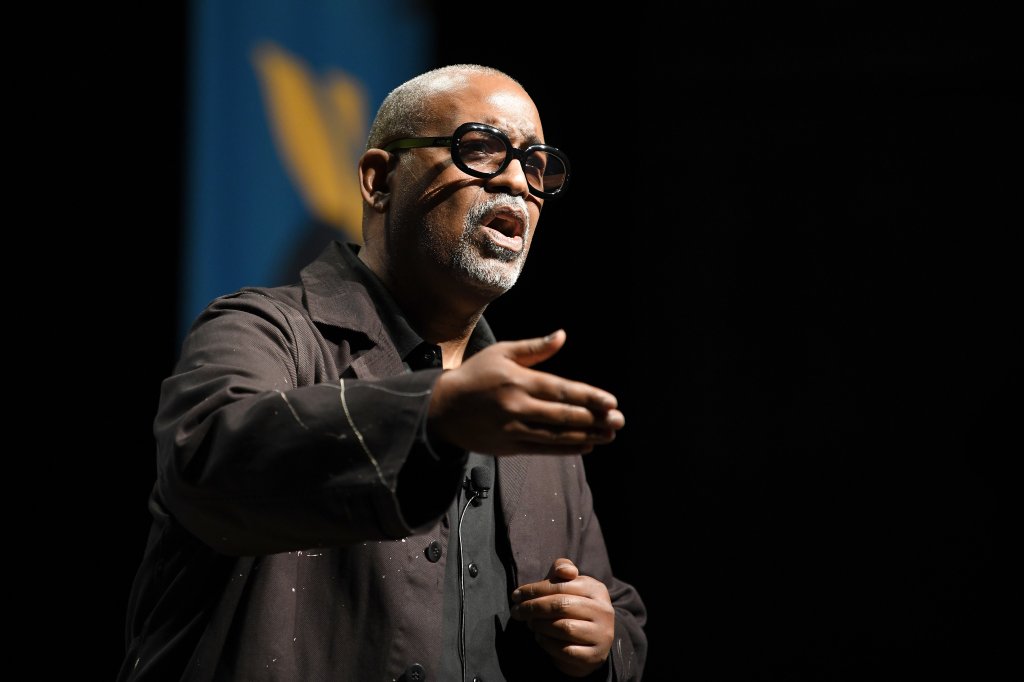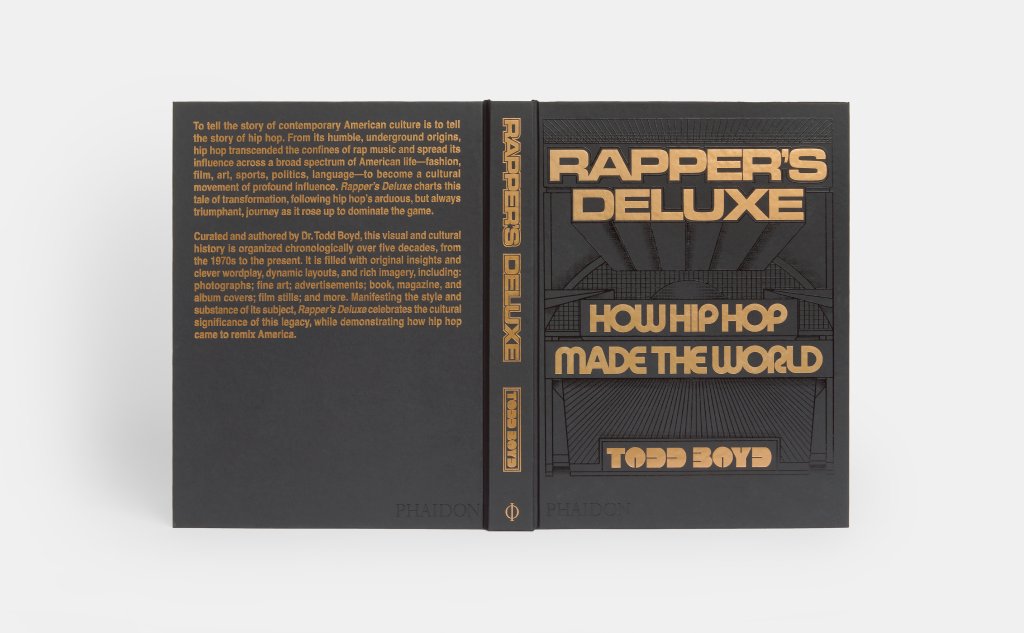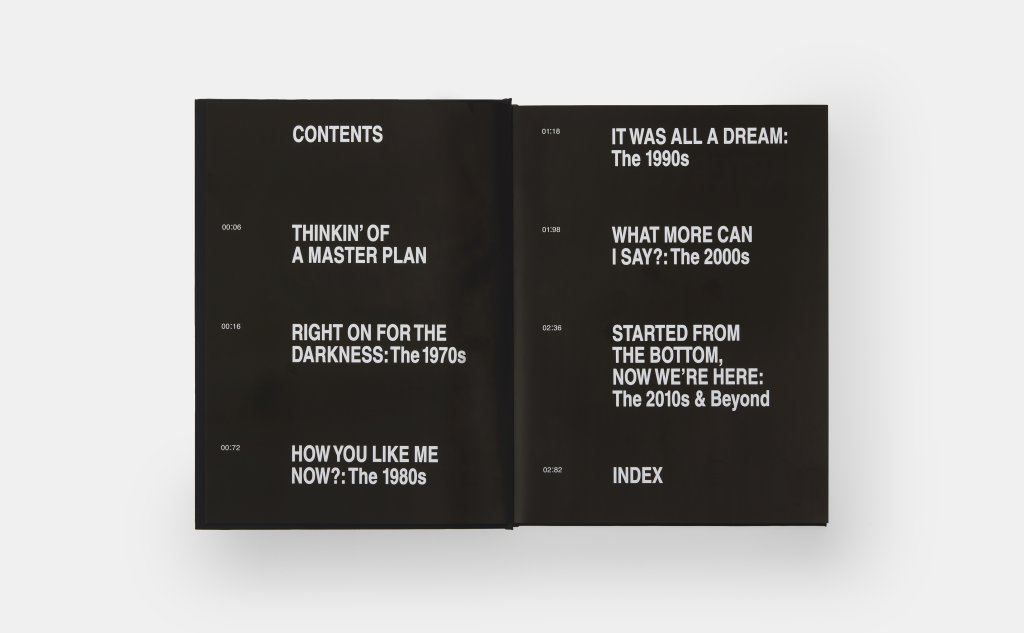
Dr. Todd Boyd and his professorial career date back to the early 1990s and over the years has lent his research and views towards cultural happenings, most notably Hip-Hop music and culture. In his new book, Rapper’s Deluxe: How Hip Hop Made The World, Dr. Boyd examines the early beginnings of Hip-Hop and looks at the massive sway it has on fashion, language, and more.
Dr. Todd Boyd was gracious enough to speak with Hip-Hop Wired about Rapper’s Deluxe, which transformed into a discussion about Dr. Boyd’s engagement with Hip-Hop as a young student and into his current position as a college professor. The Detroit native opened up our discussion by explaining the title of the book which sits as a clever nod to Hip-Hop fans, especially on the musical side.

“I thought about ‘Rapper’s Delight,’ obviously because of it being the first commercially available rap song but also thinking about everything that happened after that song was released,” Dr. Boyd began. “Then the word deluxe. When you think of that word, you think of something being more than the average, or more than you expect.”
He added, “As you go through the book, which moves in an arc, so many things happen within the culture that by the time you reach the end. It’s also like when Hip-Hop was primarily released on CDs and the deluxe version of an album would have bonus tracks. You’re getting more for your money, and that’s what the book is aiming for.”
That aim is true of Rapper’s Deluxe. The sheer size of the tome alone seems staggering and yet there could be countless editions to emerge from its solid base.
We then asked Boyd about his early days in Detroit and if he had any prescient visions of what the culture would become considering the evolution it underwent during his formative years. While Boyd confirmed he couldn’t have known we’d be where we are today, he did remark on the music of his youth having power and influence.
“Growing up in the 1970s and just listening to all the great music of that era was like a gift almost,” Boyd explains. “You had Marvin Gaye, Aretha Franklin, Curtis Mayfield, Stevie Wonder, Harold Melvin & The Blue Notes, The O’Jays, Parliament-Funkadelic, I could go on.”
“That music had so much influence. It was a lifestyle. So when Hip-Hop producers came along and began sampling some of this music, it felt like a way of reliving all of that. At the same time, it helped introduce new listeners who weren’t familiar with that time to that wonderful music,” Boyd said.
We then began to discuss the finer points of the book, which gives a decade-by-decade overview of Hip-Hop’s evolution. In the book’s opening chapter focusing on the 1970s, Boyd goes into grand detail about how the period was packed with several cultural shifts that would later give way to the commercial success of Hip-Hop while still reminding the reader of its funk, soul, jazz, and R&B roots. For history enthusiasts, this backdrop is important to note as it informs that aforementioned arc Boyd mentions.
Having lived through those moments he artfully depicts in the book, he explained that it was easy to find attachment to Hip-Hop music because, at its root, it was steeped in Black culture.
“Just hearing rap music on the radio made so much sense because they were speaking my language,” Boyd says of Hip-Hop’s early days as a commercial art form.
“What I mean by that is if you’re part of this culture, you might run into a dude on the street that had a rhyme for you. Muhammad Ali would have a rhyme before he would kick your behind. The ’70s were full of colorful characters like Nipsey Russell, who the late Nipsey Hustle flipped his name from, he spoke in rhymes. In Detroit, you might see a cat who is pimping and he spoke in that fashion. It was just a natural step for us,” Boyd said.
During his college years, Boyd remembered seeing Hip-Hop’s visual component expand and there was more of the art to consume. And like we contend with now in the streaming era, Boyd says that there were plenty of poorly constructed songs that were cringeworthy at worst and barely tolerable at best. However, the cream would rise to the top with the likes of Run-D.M.C., who he credits with truly presenting an image that matched the hard beats and rhymes.
“I was in college at the time and a lot of my peers were heavy into Michael Jackson. So when Run-D.M.C. raps ‘I’m not Michael Jackson and this is not Thriller,’ that spoke to me,” Boyd says. “Over time, you hear Slick Rick, LL Cool J and then later, Public Enemy, Special Ed, Queen Latifah, N.W.A., and it just started to elevate from there.”
The largest portion of Rapper’s Deluxe is the breakdown of the 1990s and we don’t have enough space to cover everything we discussed during our chat. But what is notable is that Boyd recognizes that this is the era when N.W.A. and 2 Live Crew’s shock and awe moments of the 1980s were just the beginning of provocative music and that’s not pointing to the brash vulgarity of their music but how fast it was starting to spread.

“You might notice that the ’90s portion of the book is the biggest because it had to be,” Boyd said. “By this time, the stars of the 1980s were becoming superstars, music videos were becoming prominent because of ‘Yo! MTV Raps‘ and you had Arsenio Hall’s show that platformed Hip-Hop, and Spike Lee infused his movies with the music.”
“The Los Angeles riot and the Rodney King tragedy happened during this period. You have the Five Percent Nation influence in music that started with Rakim but was pushed further with the likes of Brand Nubian and the Wu-Tang Clan. In a few years, Hip-Hop went from being marginal to being a global thing,” Boyd says.
If one assumes that Boyd is stuck just listening to the music of his era, they would be incorrect. While he comfortably admits that he doesn’t see himself as the target audience for the modern era of music, he named Westside Gunn and the Griselda movement and 21 Savage as acts that pique his interest.
“I like a lot of what I hear these days. It’s not going to hit me the same way it did when I first heard [Big Daddy] Kane or Scarface but I can see the art in it and I’m glad it exists for those it was made for,” Boyd eloquently shared.
“I’ve always said to give me a choice, and the streaming era helps with that somewhat. If you put it in front of me, I can decide if the music and the cultural expression are for me or not. I’m not at that impressionable age anymore but I can still experience this culture for what it is and support it from where I stand even if I’m not 100 percent engaged as I once was,” Boyd concluded.
Dr. Todd Boyd is the Katherine and Frank Price Endowed Chair for the Study of Race & Popular Culture and Professor of Cinema and Media Studies in the USC School of Cinematic Arts.
To purchase Rapper’s Deluxe: How Hip Hop Made The World and to learn more, click here. You can also follow Dr. Boyd on his Instagram page here.
—
Photo: Phaidon Books
